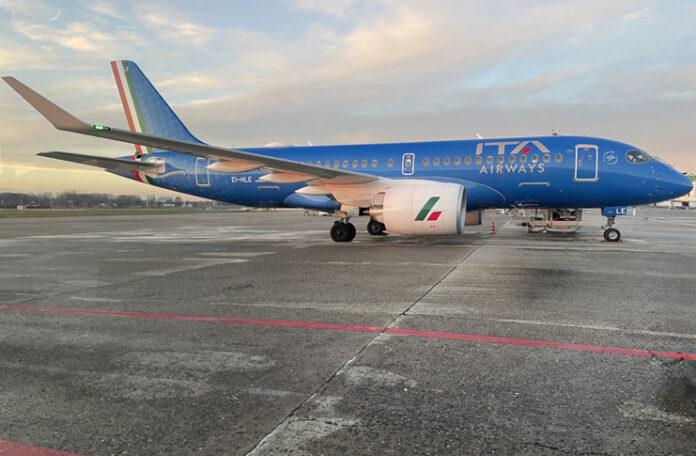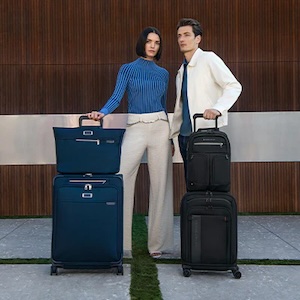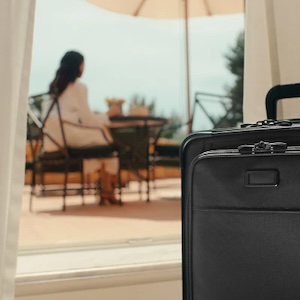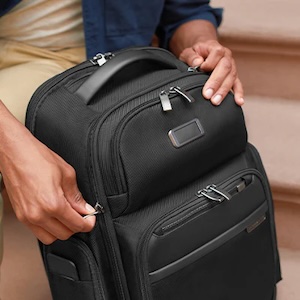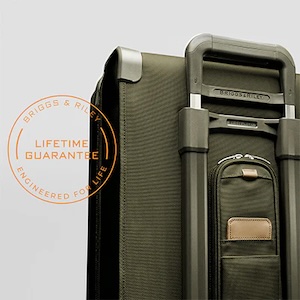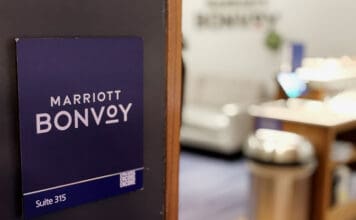TravelingForMiles.com may receive commission from card issuers. Some or all of the card offers that appear on TravelingForMiles.com are from advertisers and may impact how and where card products appear on the site. TravelingForMiles.com does not include all card companies or all available card offers.
Other links to products and travel providers on this website will earn Traveling For Miles a commission that helps contribute to the running of the site. Opinions, reviews, analyses & recommendations are the author’s alone and have not been reviewed, endorsed, or approved by any of these entities. Terms apply to all credit card welcome offers, earning rates and benefits and some credit card benefits will require enrollment. For more details please see the disclosures found at the bottom of every page.
Having never before flown on an Airbus A220, a very good Economy Class fare for travel between London City Airport and Milan’s Linate Airport finally gave me the opportunity to see what this (relatively) new aircraft is like and to review an ITA Airways flight for the first time.
The booking
My roundtrip Economy Light (hand baggage only) booking for travel between London City Airport and Milan cost $161.30 and this gave me the very least that ITA Airways offers – a seat somewhere on the aircraft and a baggage allowance of 1 x 8Kg/17.5Lb carry-on bag + 1 personal item.
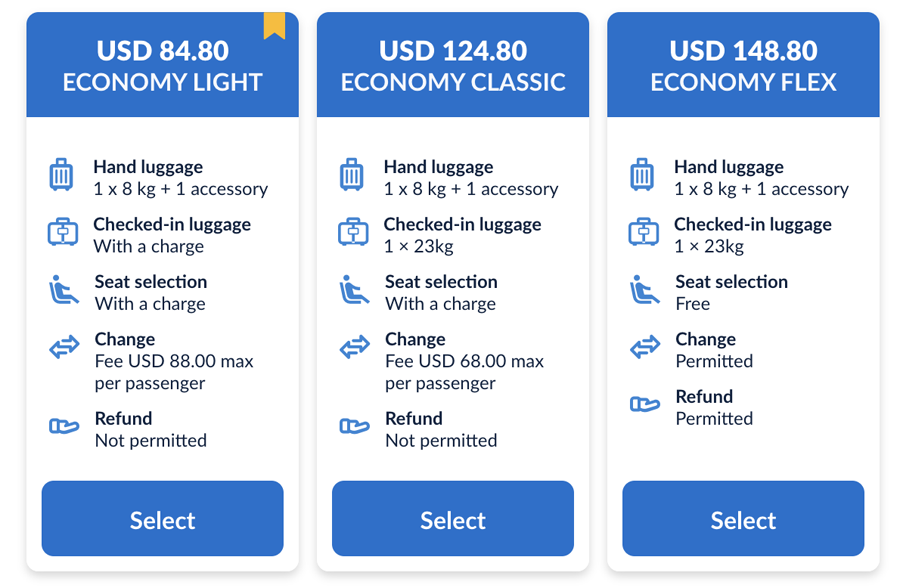
Fortunately, at the time of booking (and at the time of travel), I had ITA Airways Volare Executive (top-tier) status courtesy of a status match that I’d triggered a couple of years ago 9I have no idea why my status was still valid) so even though the ITA website initially showed that it wanted to charge me for seat selection …

… I was able to secure an exit row seat for no charge at all.

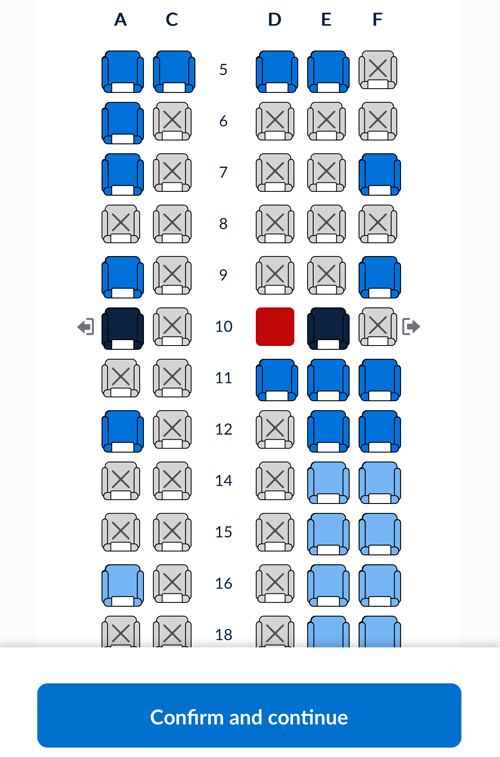
This alone made the 5 minutes of work that it took to get the status match very worthwhile 🙂
London City Airport
I arrived at City Airport using the London Underground (subway) and the Docklands Light Railway (DLR) and it took me no more than 3 or 4 minutes to get from the platform and to the barriers leading to airport security.
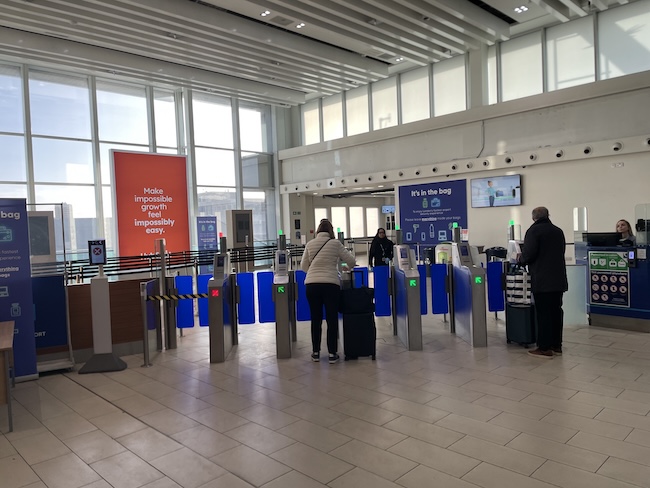
I had checked-in online the day before I was due to fly so I had a mobile boarding pass in my phone and had no need to visit the check-in desk in the departures area, but had I needed to, I doubt I would have been held up for very long as there were no lines to be seen.
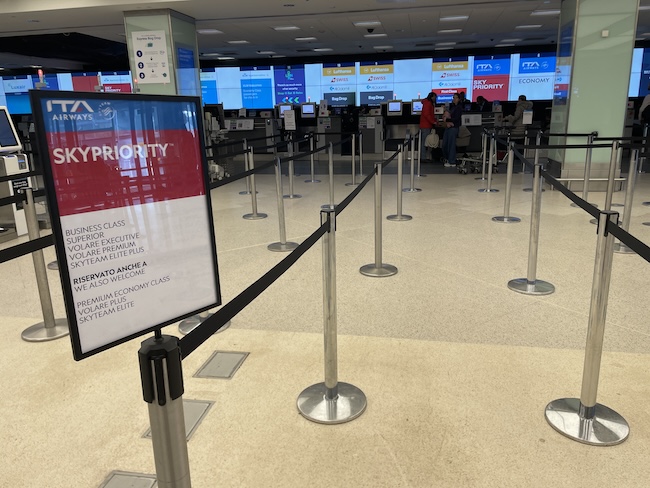

There was a short line ahead of me at security, but because London City Airport has the new-style scanners (the one which allow liquids, laptops and tablets to stay packed away), and because those scanners weren’t triggering demands for secondary screening, I was through security and at the airport’s cafes, restaurants and shops less than 10 minutes after I had got off the DLR.
Once airside, I picked up a sandwich, a drink and a snack and I headed to the gate (there are no lounges in the main terminal of London City Airport).
Related: What to expect when you travel from London City Airport (LCY)
At the gate and boarding
By the time I reached the gate, it was already quite busy and it felt a little chaotic as passengers crowded around the gate agents’ desk and the tensa barriers (the concept of boarding groups seemed to be an alien concept to a lot of the people present).
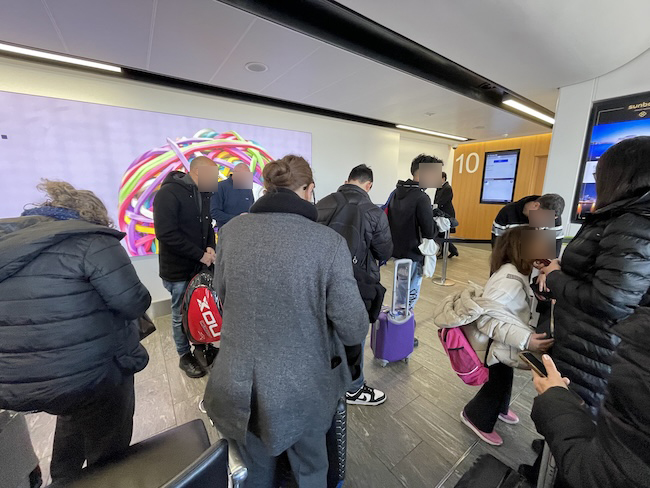
Despite this, when it came time to board, the gate agents were very good at calling one group at a time and rejecting those passengers for whom numbers had suddenly become more confusing than quantum physics and who tried to board ahead of their group number.
Boarding was called about 25 minutes before our scheduled departure time and because City Airport doesn’t use jet bridges, passengers were invited to walk down some stairs to the airport apron where we were asked to wait to be given clearance to walk to the aircraft.
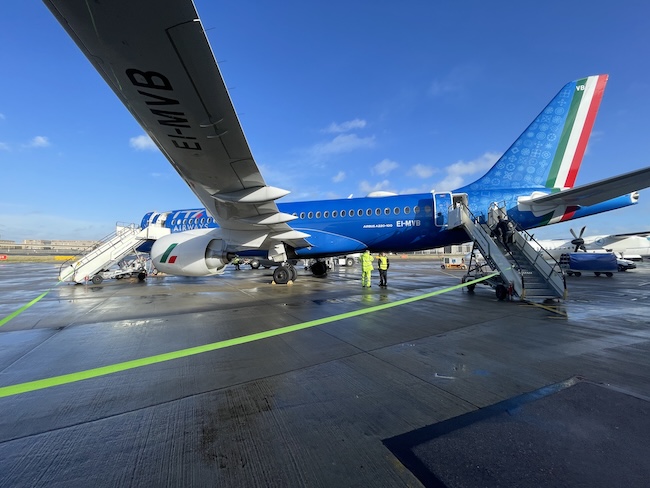
Once clearance was given, we were invited to cross to the aircraft and to board by either the front or the rear doors of the aircraft (which door you boarded by was dictated by your seat row).
ITA Airways Airbus A220 Economy Class cabin
The ITA Airways Airbus A220 offers a 2-3 seating arrangement regardless of where you are in the aircraft and the seats in the Business Class section are (mostly) no different to the seats in Economy Class.
This allows ITA to move the curtain dividing Economy Class from Business Class and alter the number of seats that it is willing to sell in each cabin with no trouble at all.
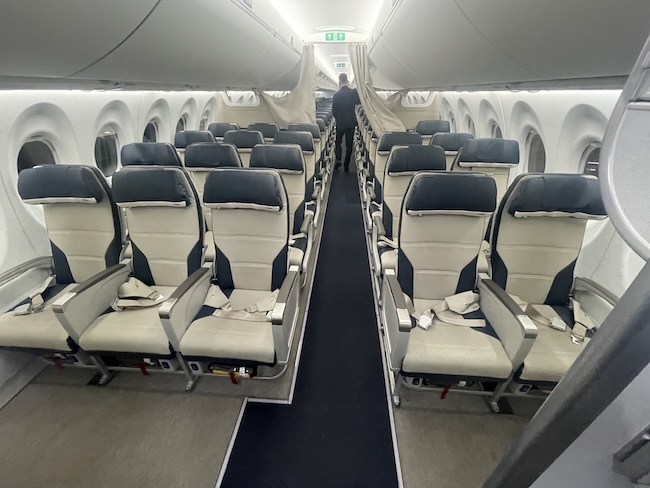
All seats offer a 4-way adjustable headrest, all seats are 18″ wide and all seats other than the seats in row 1 and exit row seats offer 30″ of pitch (legroom).
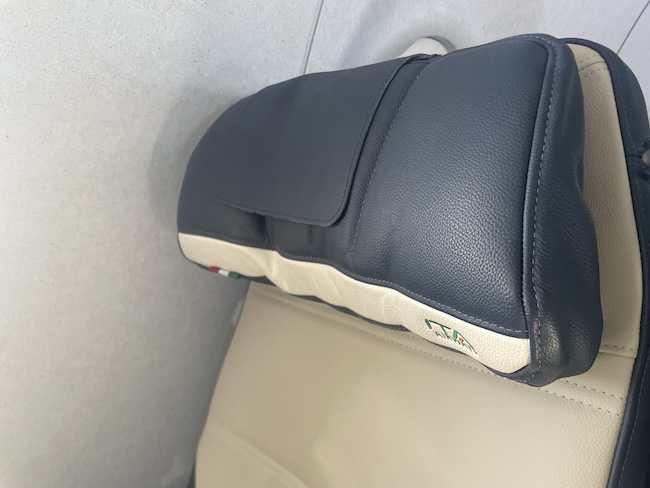
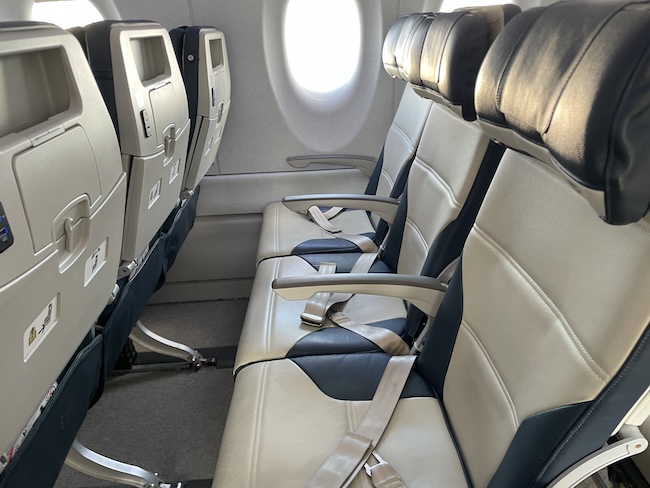
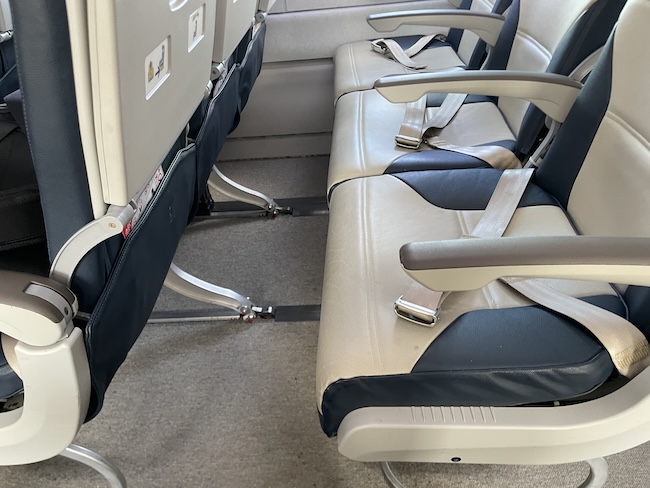
The seats in the exit row offer a very generous 38″ of pitch and that’s why they’re easily the best seats in the Economy Class cabin.
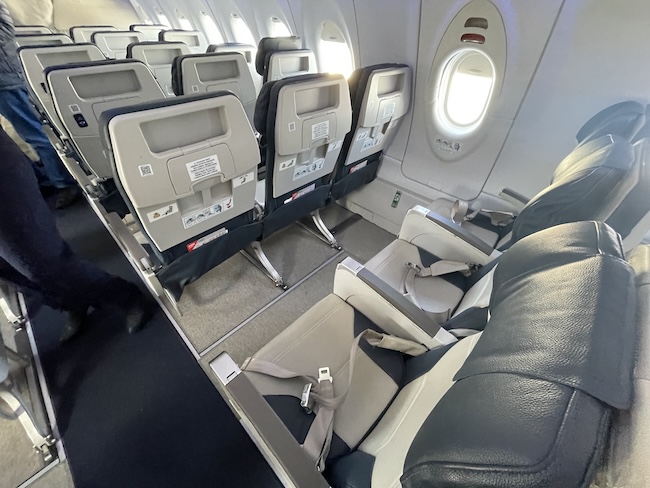
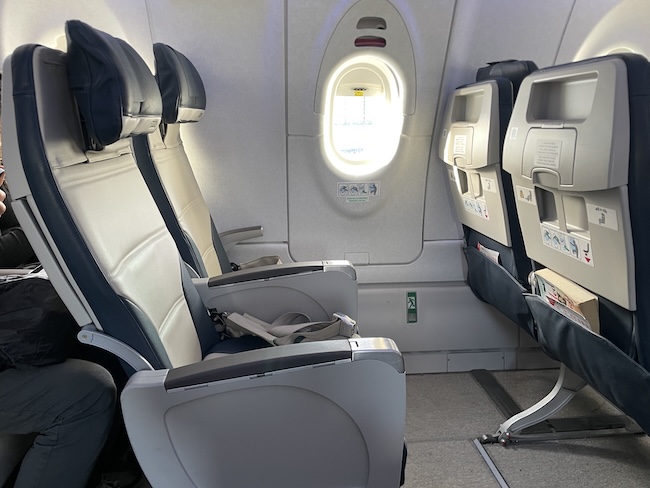
As you may have noticed, most of the seats in this aircraft have moveable armrests, but the exit row seats do not. This is because while the regular seats have their tray tables deploy from the back of the seat ahead of them …
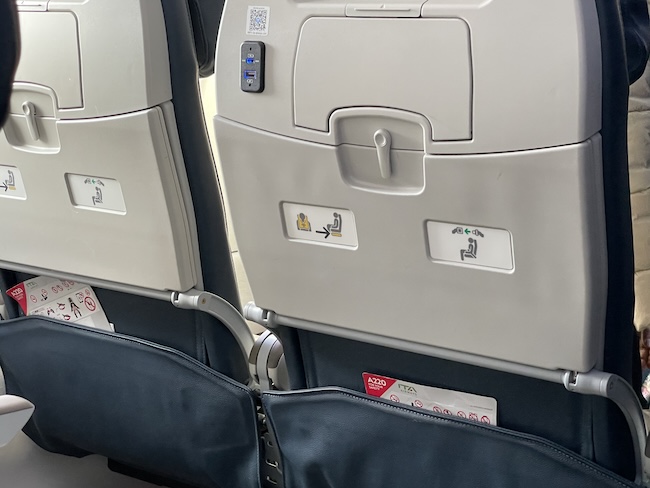
… the tray tables for the exit row seats (and the seats in row 1) deploy out of the armrests and are very small.
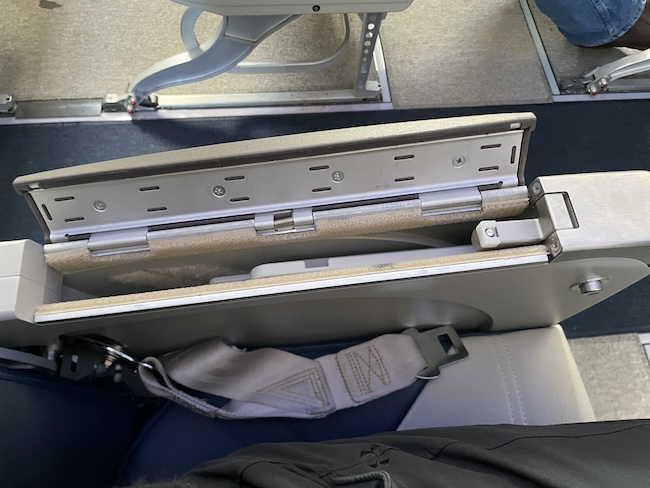
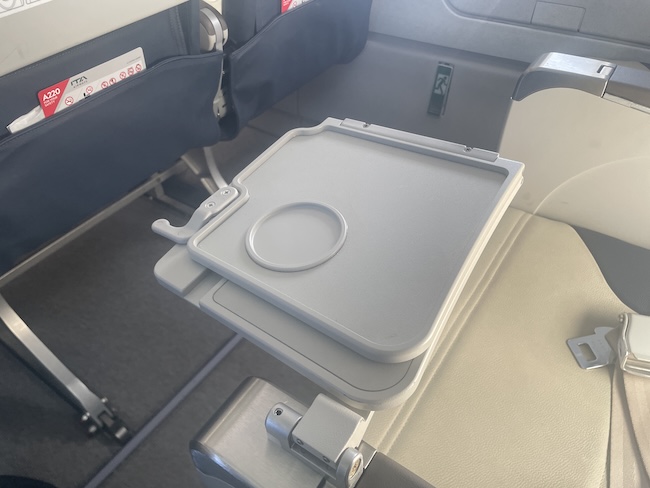
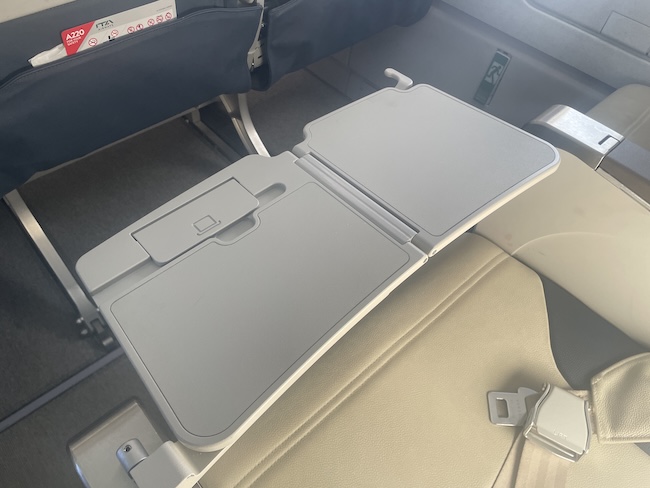
Another difference between the regular seats and the exit row seats is that the passengers in the regular seats have access to a USB-A and a USB-C port directly ahead of them …
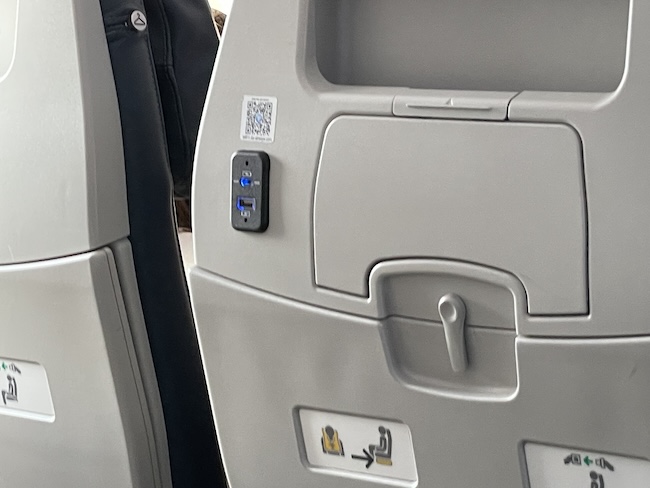
… while the USB-A and USB-C ports for the exit rows are under the seats.
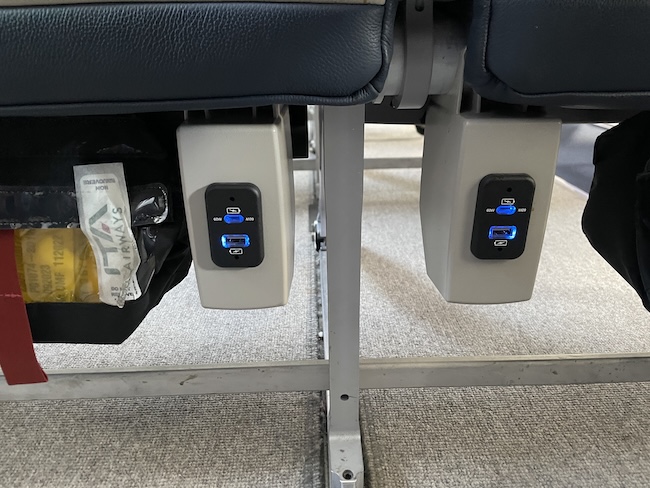
The final key difference between the standard seats and the exit row seats is that the standard seats have a working tablet holder in the seat back ahead of them while the table holders in the exit row do not appear to deploy (at least, I couldn’t get mine to open and neither could two other people in the row).
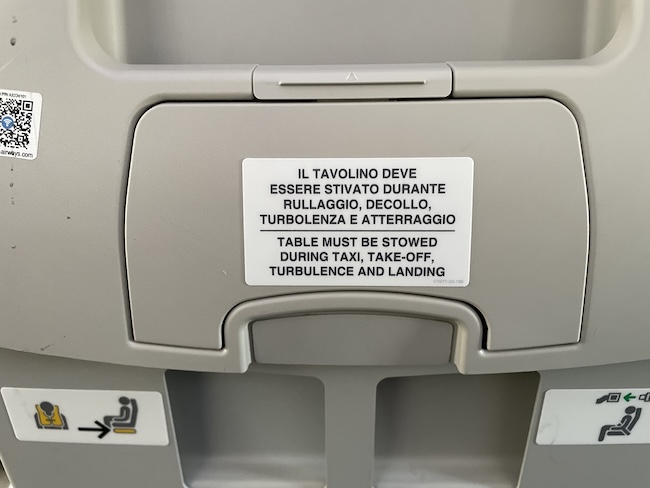
To make up for this, however, there is a table rest built into the exit row’s tray tables.

Above each row of seats the A220-100 offers individual seat lights and air vents/nozzles so passengers have a little bit of control over the temperature around their seat.
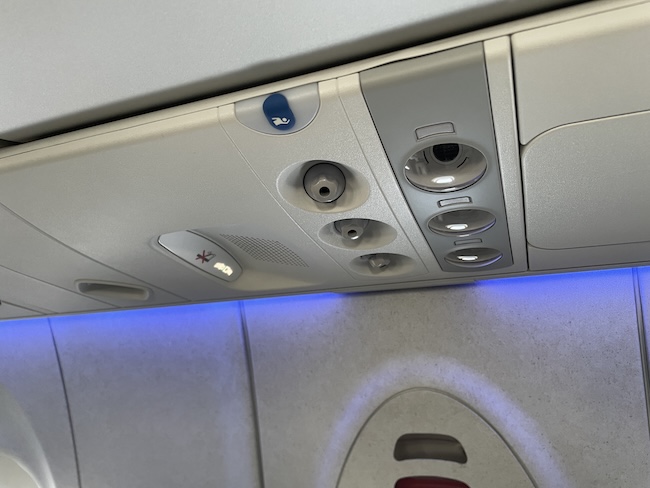
Lastly (as far as the A220’s cabin goes), it’s worth noting that the overhead bins are large and seem to be able to hold more luggage than the aircraft’s size suggests they may hold.
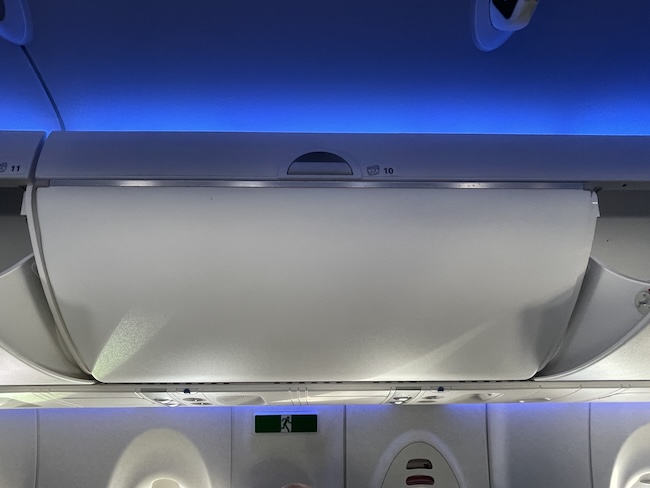
This didn’t make much difference on this flight as the aircraft wasn’t full, but on busy days/routes this could be what saves a few people from having to gate-check their bags.
The flight/experience
The aircraft doors were closed at almost exactly our scheduled departure time, we were taxiing towards the London City Airport runway not long after that, and we were in the air just a few minutes later. No waiting.
Soon after we levelled out, the two flight attendants working in the Economy Class cabin began the limited complimentary drinks & snacks service offered on this flight.
Coke, orange juice, pear juice, and water were the complimentary drinks I saw, but there were a few other available that I missed. Hot drinks were not an option on this flight so if you think you’re going to need a caffeine fix, make sure you get a coffee in the terminal before you board.
As far as snacks go, there was a choice between a pre-packed canolo and some kind of salted crackers/chips/crisps.
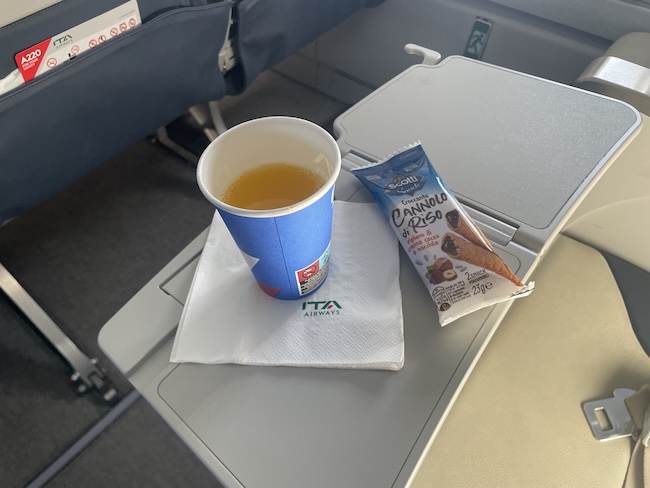
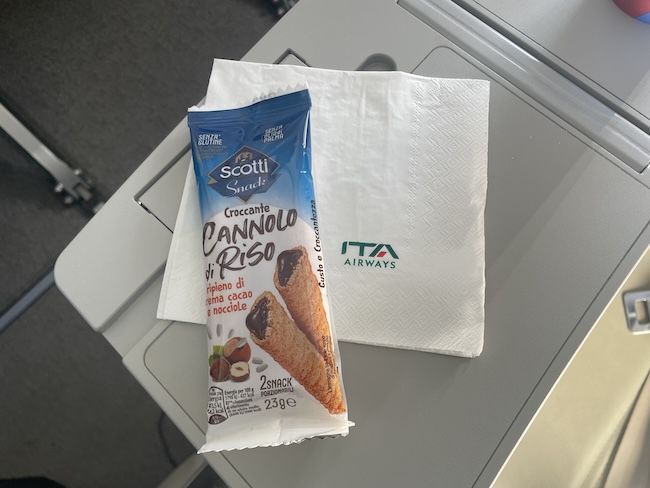
That was it. Not exactly a feast fit for a king, but this Economy Class on an intra-Europe flight, so it’s to be expected, and this is more than you’d get on a British Airways flight of a similar distance.
I was happy to note that the ITA Airways A220-100 aircraft offers inflight wifi which, apparently, can be accessed via a QR code that you’ll see on the seats ahead of you …
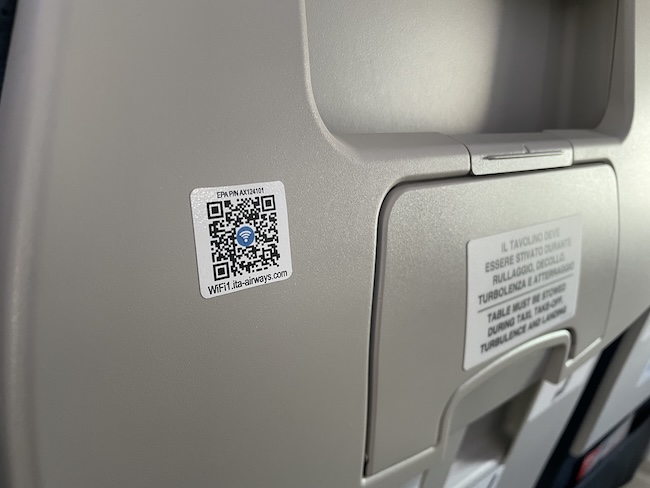
… but despite each of my devices finding the wifi network, none of them managed to connect and, eventually, the wifi network seemed to disappear altogether.


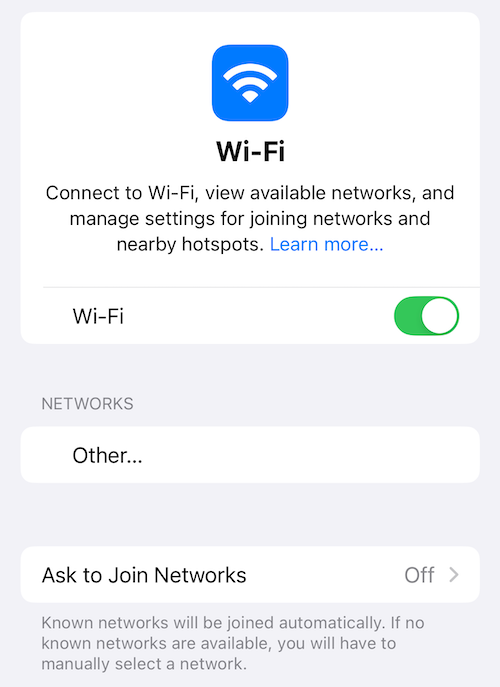
I’m reasonably sure that no one else on the flight had any luck with the wifi either, so as the same issue also arose on the flight back, either ITA is choosing not to offer wifi on this route (a decision which would be odd) or I was very unlucky to find myself on two aircraft on which the wifi was inoperative.
That’s really all there is to report from the flight – not much happens in Economy Class on short-haul routes.
We landed in Linate around 15 minutes early and parked up at a remote stand (the airport only has a handful of jet bridges) before being bused to the terminal.
Final thoughts
On a flight of this length (sub 2 hours), the slimline seats felt comfortable and with 18″ of width feel noticeably more spacious than the slightly narrower seats you’ll find on a lot of larger European short-haul aircraft.
The cabin, as a whole, also feels spacious (that could be down to the larger-than-usual windows that the A220 has fitted) and the overall travel experience offered by this cabin feels nicer than what I frequently experience on BA’s A319/A320 aircraft.
The A220 is smaller than the A319 or an A320, but somehow it feels less cramped than either of those aircraft and, possibly because the A220 holds fewer people, there was less of a “cattle-class” feeling to the whole experience. It was nice.
Yes, the malfunctioning wifi was a little annoying (I had planned to work on the flight), the tray table was very small, and I’m not sure how well the cream upholstery will age, but those three things aside, there’s nothing to really criticise here.
Boarding was efficient, the crew were friendly, the on board drinks and snacks were on a par with my expectations (and better than what BA offers), I didn’t feel squashed into my seat, and I arrived in Milan early. In my world, that’s a very good trip 🙂
Related: Review: Hyatt Centric Milan Centrale (Terrace Suite)
Conclusion
I like the ITA Airways A220-100 and the Economy Cabin that it offers, and given that the airline operates this aircraft out of my favorite London Airport to two of my favorite European cities, I’ll be booking another trip as soon as I get a chance.
Given how hectic and chaotic modern travel can sometimes feel (especially if you not in a premium cabin), this route on this aircraft feels surprisingly civilised, and that’s probably as big a compliment as I can pay to what is, after all, a pretty basic service.

